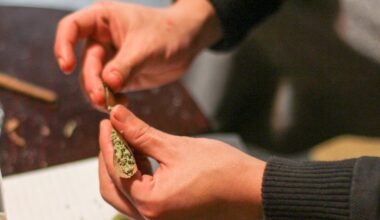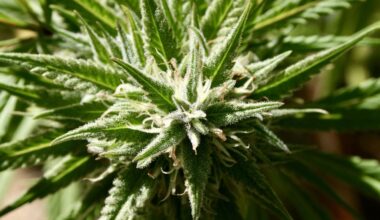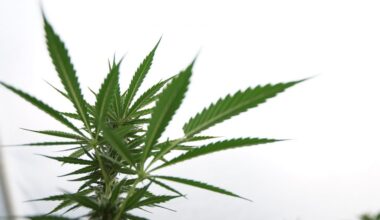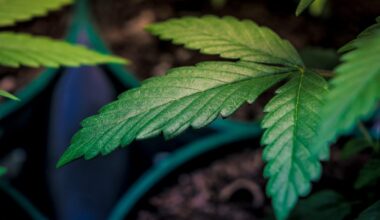A new study found “no significant impact” on driving ability after smoking CBD-rich marijuana and no effects on vital signs, even as all the study participants exceeded the legal limit for THC in their blood.
For the pilot study conducted in Switzerland, 33 participants were each given a joint containing 500 mg of tobacco and either 500 mg of CBD-rich marijuana (16.6 percent total CBD; 0.9 percent total THC) or 500 mg of a placebo containing a product called Knaster Hemp, a nicotine-free and cannabinoid-free herbal mixture with a hemp aroma. Researchers then used multiple common DUI tests.
As the Swiss market for CBD products has exploded in recent years, the authors wished to investigate the efficacy of CBD-rich tobacco smoking cessation products and their impact on driving safety.
According to the three researchers from the Institute of Forensic Medicine at the University of Bern, the “purpose of the current study was to inform recommendations for warnings on tobacco substitute products containing CBD-rich marijuana and to provide information for drivers regarding the possible risks of consuming CBD-rich marijuana.”
“To the best of our knowledge, the current study is one of the first to investigate the potential impact of smoking CBD-rich marijuana for road safety,” they said.
The results revealed no significant differences between the effects of smoking CBD-rich marijuana and placebo on reaction time, motor time, behavior under stress or concentration performance.
“No significant impact on driving ability was found after smoking CBD-rich marijuana.”
In order to confirm participants were above the legal limit for driving with THC in their system, blood samples were taken after smoking and after completion of their tests to determine the cannabinoid concentrations of CBD, THC and THC-metabolites.
The 19 men and 14 women in the study, who were between the ages of 19 and 31, flipped a coin and, depending on which side the coin landed, were handed either a joint with CBD-rich marijuana or the placebo. Participants were tested a second time between seven and 14 days later and “those who had smoked a CBD joint on the first day of testing received a placebo joint and vice versa.”
After statistical analysis, the following groups were distinguished: CBD versus placebo consumption, women versus men and first trial versus second trial.
The psychological assessment of the drivers consisted of three different tests designed to measure and examine the attitudes relevant to road safety, and it was designed to aid reliable decision-making regarding an individual’s fitness to drive. It included a reaction test, a determination assessment to measure the ability to react under complex stimulus conditions, and a Cognitrone test, where the participant compares one geometric figure with four other geometric figures.
The study found that were no significant differences in reaction time or motor time between smoking CBD-rich marijuana and placebo. There was a difference between men and women’s reaction time after consuming the CBD-rich marijuana, and in motor time, regardless of whether the placebo or the CBD rich marijuana was consumed. There was no difference between the first and second day of testing, allowing researchers to conclude that “learning effects” can be excluded.
“No effects on vital signs were observed after smoking CBD-rich marijuana.”
In the determination test, each participant was put in an “overstrained situation” with high stimulus frequency so that they were no longer able to perform the required reactions. This made it possible to study the participants’ behavior under varying degrees of psychophysical stress.
The results revealed “no significant differences in the comparison between CBD and placebo consumption, between male and female participants, or between the first and second trial.”
The analysis of the Cognitrone test, where the participant compared one geometric figure with four other geometric figures, also revealed no significant differences between smoking CBD-rich marijuana and placebo, or any significant differences between men and women or between the first and second trials.
To further assess one’s fitness to drive, three common tests were given for balance and coordination based on what is used by drug recognition experts. “These tests are regularly used in Switzerland by trained medical personnel on behalf of the police to determine neurological deficits after substance misuse and/or possible intoxication of persons suspected of impaired driving,” the study states.
First, the participant’s balance and internal clock were tested by standing up with arms out and eyes closed with instructions to open their eyes after they believed 30 seconds had elapsed, while the examiner recorded the actual elapsed time. Although there was a statistically significant difference between the placebo and the CBD group, the results for both groups were well within the normal range of 20 to 45 seconds and, regardless of whether the CBD or placebo joint was smoked, all the study participants were able to maintain “a secure balance.”
Next, the commonly seen finger-to-nose test was used, and “of the 33 participants, 32 touched the tip of the nose with each action” regardless of if the CBD or placebo joint was smoked. But after consumption of the CBD joint, “one participant missed the tip of his/her nose twice.” More difficult for the test subjects was following the instructions to alternate arms, left-right-left-right-right-left, as that was performed incorrectly five times: three times from the CBD group and twice from participants who smoked the placebo joint.
Finally, during the walk-and-turn test, everyone walked without interruption “and no participants missed the heel-to-toe or hop around, regardless of whether they smoked the CBD or placebo joint.” There were some discrepancies, with 19 of the 66 tests taking the wrong number of steps, especially during the turn, but those errors were evenly spread over both groups: 10 times after a participant smoked the CBD joint and nine times after they consumed of the placebo joint.
Despite blood tests revealing that all participants had a THC level in their blood above the legal limit, at the time the testing began, no significant differences in blood pressure, behavior, orientation, mood, language and psychomotor skills were observed in those tested. The researchers concluded that there was no significant influence from smoking CBD-rich marijuana on vital signs.
“Although free THC concentrations reached levels that were considered to cause symptoms of impairment in other studies in which THC-rich marijuana was smoked, no signs of impairment were observed in the current study,” the authors wrote. “These findings suggest that higher CBD concentrations caused a negative allosteric effect in the endocannabinoid system, preventing the formation of such symptoms.”
Despite no symptoms of impairment being observed, these researchers nevertheless recommended that consumers refrain from driving for several hours after smoking CBD-rich marijuana, as legal THC concentration limits can be exceeded.
These conclusions are similar to earlier studies about CBD’s impact on driving from the University of Sydney. They are also in line with the recent decision from Michigan’s Impaired Driving Safety Commission, which concluded that there should not be a per se limit on THC concentration in the blood to determine impairment in drivers and instead “recommends the use of a roadside sobriety test(s) to determine whether a driver is impaired.
A study published in 2019 also concluded that those who drive at the legal THC limit—which is typically between two to five nanograms of THC per milliliter of blood—were not statistically more likely to be involved in an accident compared to people who haven’t used marijuana.
Separately, the Congressional Research Service in 2019 determined that while “marijuana consumption can affect a person’s response times and motor performance… studies of the impact of marijuana consumption on a driver’s risk of being involved in a crash have produced conflicting results, with some studies finding little or no increased risk of a crash from marijuana usage.”
Federal Scientists Say Onerous U.S. Marijuana Regulations Hinder Urgent Research
Medical Disclaimer:
The information provided in these blog posts is intended for general informational and educational purposes only. It is not a substitute for professional medical advice, diagnosis, or treatment. Always seek the advice of your physician or other qualified healthcare provider with any questions you may have regarding a medical condition. The use of any information provided in these blog posts is solely at your own risk. The authors and the website do not recommend or endorse any specific products, treatments, or procedures mentioned. Reliance on any information in these blog posts is solely at your own discretion.







